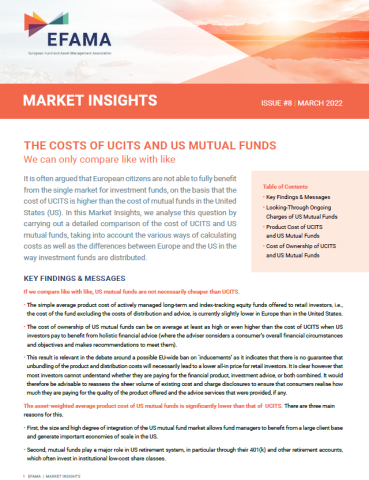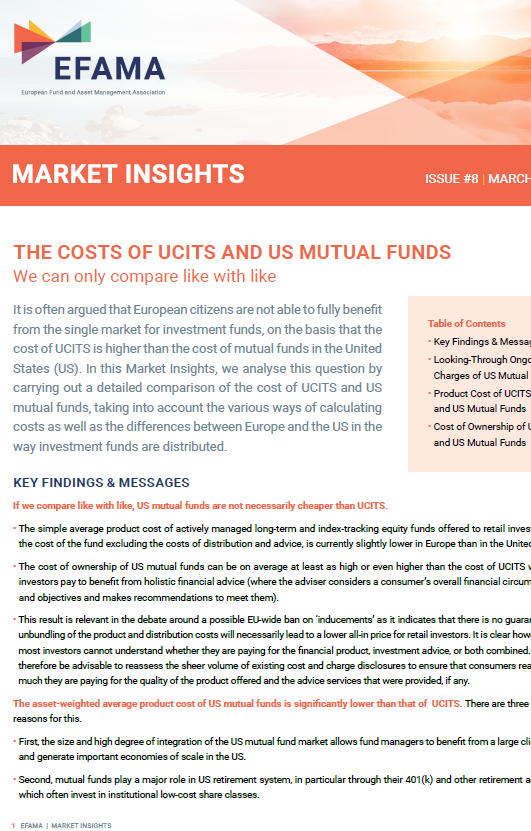It is often argued that European citizens are not able to fully benefit from the single market for investment funds, on the basis that the cost of UCITS is higher than the cost of mutual funds in the United States (US). In this Market Insights, we analyse this question by carrying out a detailed comparison of the cost of UCITS and US mutual funds, taking into account the various ways of calculating costs as well as the differences between Europe and the US in the way investment funds are distributed.
KEY FINDINGS & MESSAGES
If we compare like with like, US mutual funds are not necessarily cheaper than UCITS.
- The simple average product cost of actively managed long-term and index-tracking equity funds offered to retail investors, i.e. the cost of the fund excluding the costs of distribution and advice, is currently slightly lower in Europe than in the United States.
- The cost of ownership of US mutual funds can be on average at least as high or even higher than the cost of UCITS when US investors pay to benefit from holistic financial advice (where the adviser considers a consumer’s overall financial circumstances and objectives and makes recommendations to meet them).
- This result is relevant in the debate around a possible EU-wide ban on ‘inducements’ as it indicates that there is no guarantee that unbundling of the product and distribution costs will necessarily lead to a lower all-in price for retail investors. It is clear however that most investors cannot understand whether they are paying for the financial product, investment advice, or both combined. It would therefore be advisable to reassess the sheer volume of existing cost and charge disclosures to ensure that consumers realise how much they are paying for the quality of the product offered and the advice services that were provided, if any.
The asset-weighted average product cost of US mutual funds is significantly lower than that of UCITS. There are three main reasons for this.
- First, the size and high degree of integration of the US mutual fund market allows fund managers to benefit from a large client base and generate important economies of scale in the US.
- Second, mutual funds play a major role in US retirement system, in particular through their 401(k) and other retirement accounts, which often invest in institutional low-cost share classes.
- Third, institutional shares offered to retail investors, in particular through their 401(k) plans, are included in the calculation of the product cost of US mutual funds, which is not the case for the UCITS covered in this study.
These considerations highlight the importance of two policy objectives for the European Union: the need to further deepen the single market for UCITS and the importance of achieving the Capital Markets Union project, in particular in the area of pensions and investor education.



























